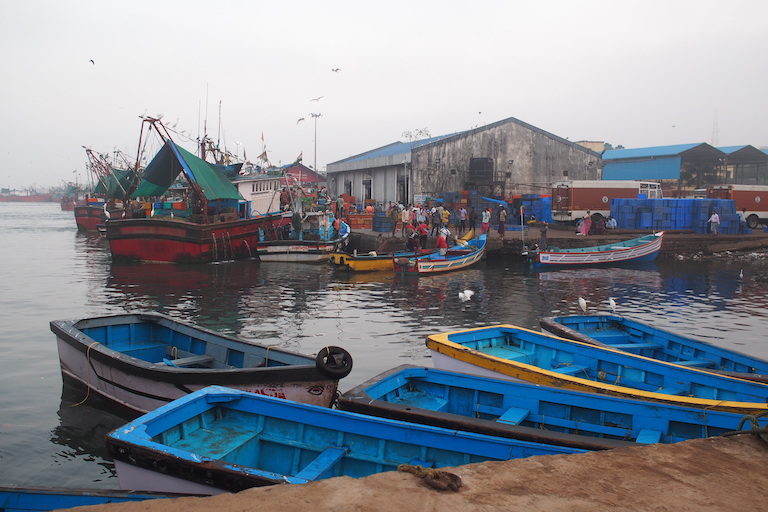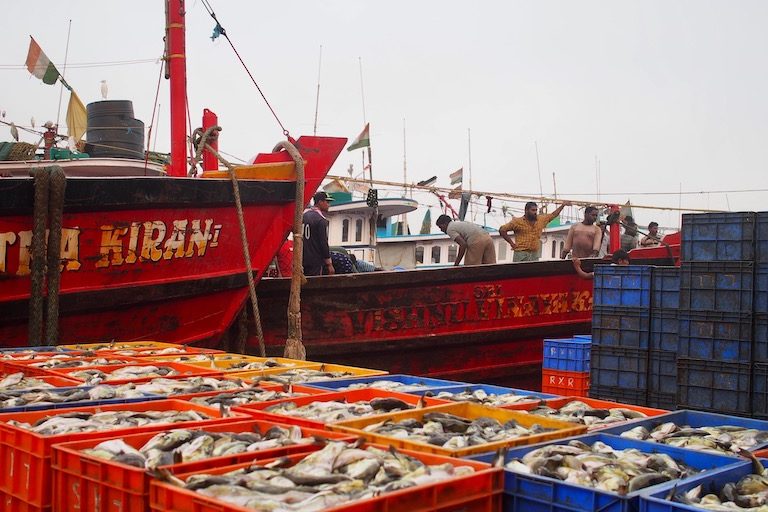- In India, fishing has transformed over the decades from a small-scale artisanal practice into an increasingly industrialised sector and catches have grown apace.
- The industry has largely gone unregulated and yields have slowed in the past decade, including an unexpected and disruptive crash in sardine catch.
- In response, India’s coastal states and central government have begun to take measures to make fishing more sustainable. The latest, and potentially the most important move, is the creation of the first ministry for fisheries.
Last month, June 2019, the Indian government created its first ministry for fisheries. Although it clubs fishing together, rather oddly, with animal husbandry and dairy, the move fulfills a long-standing demand of the country’s fishing community and becomes the latest, and potentially the most important, of India’s slowly growing efforts to better regulate and manage its fisheries.
Fishing has transformed over the decades from a small-scale artisanal practice into an increasingly industrialised sector. The widespread adoption of mechanised boats helped hike India’s fish catch from an estimated 0.53 million metric tons in 1950 to 3.83 million metric tons in 2017.
Until recently, this growth was largely unregulated, leading to over-capacity of fishing boats, inter-state conflict and overfishing of some species. But as yields have slowed in the past decade, including an unexpected crash in the sardine catch, India’s coastal states have begun to take measures to make fishing more sustainable. Some are also pressing for better national regulation.
In recent years, some states have introduced rules to extend the national ban on fishing during the monsoon — the one notable pre-existing policy instituted to let fish spawn as well as improve fisherfolk’s safety. Some new state rules also regulate gear to reduce indiscriminate fishing. These include controls on the mesh size of nets as well as outright bans on practices like bull trawling, in which massive nets sweep everything up from the seafloor. Southern states are also instituting rules on the minimum legal size of fish to reduce the catch of juveniles before they can spawn and replenish the population.
“Slowly, government is becoming stricter,” Sunil Mohamed, principal scientist at the Central Marine Fisheries Research Institute (CMFRI), a government research body, in the city of Kochi, told Mongabay.
The government has good reason to regulate this sector: it supports 4 million people, of which almost 1 million are active fishers. India’s tropical oceans host a great diversity of fish — more than 400 species may appear in one trawl haul — and officials estimate the annual catch could grow to as much as 4.4 million metric tons. Marine exports for the country crossed $7 billion in 2017-2018, up from just $5 million in 1971.
Fishing communities also seem to be growing more amenable to management. “People are beginning to see that unbridled growth can lead to crisis,” Mohamed said.


 Members of the traditional fishing village of Urur-Kuppam in the southern Indian state of Tamil Nadu tend their gear. Increased competition and climatic changes are affecting the livelihood of such communities. Photo by Vaishnavi Chandrashekhar.
Members of the traditional fishing village of Urur-Kuppam in the southern Indian state of Tamil Nadu tend their gear. Increased competition and climatic changes are affecting the livelihood of such communities. Photo by Vaishnavi Chandrashekhar.

 Fishers roll out a red purse-seine net in Mangalore, a major fishing harbour in southwest India. Some of the country’s coastal states are beginning to regulate purse seine fishing boats, especially the size of the net mesh to ensure juvenile fish don’t get caught. Photo by Vaishnavi Chandrashekhar.
Fishers roll out a red purse-seine net in Mangalore, a major fishing harbour in southwest India. Some of the country’s coastal states are beginning to regulate purse seine fishing boats, especially the size of the net mesh to ensure juvenile fish don’t get caught. Photo by Vaishnavi Chandrashekhar.

